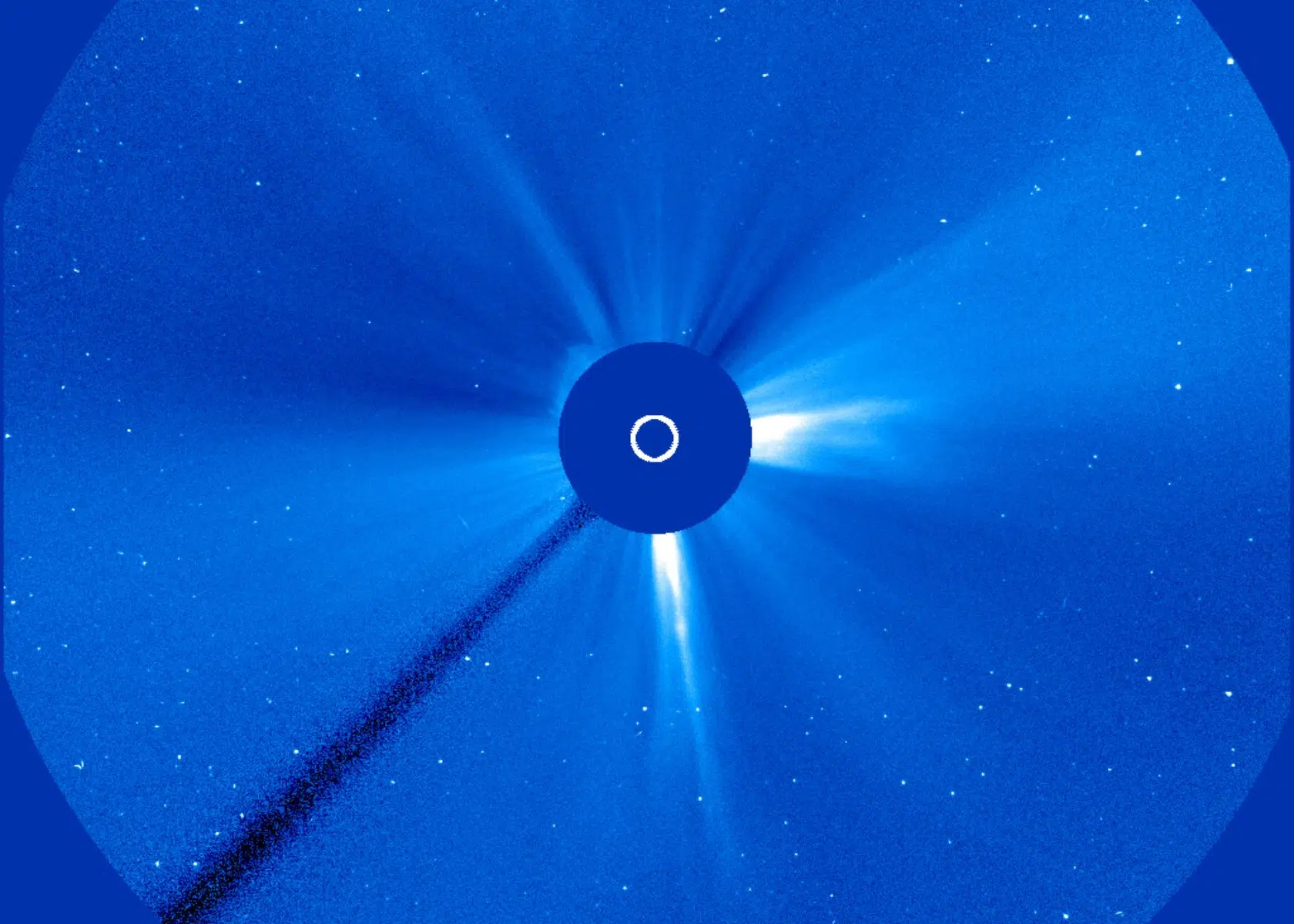
A super strong geomagnetic storm hit Earth recently, sparked by a rare “double” X-class flare from the sun. This storm, the strongest in over six years, lit up the skies worldwide with colorful auroras and other bright phenomena.
The event reveals the sun is probably at the peak of its eleven-year cycle of activity, known as solar maximum. This means Earth might face more of these powerful solar storms in the next few months, as reported by Live Science.
Last Saturday, March 23rd, the sun shot out a whopping 1.1 magnitude X-class solar flare. This type of explosion is the strongest the sun can possibly produce. The important thing is that this blast was a bit different.
It was actually two explosions happening at the same time. This is known as a sympathetic solar flare. These explosions stemmed from two separate sunspots, AR3614 and AR3615, which were far apart and hundreds of thousands of miles away from each other, according to Spaceweather.com.
The double explosion made the Earth’s protective layer weaker
The double explosion resulted in a huge cloud of plasma and radiation into space called a coronal mass ejection (CME). This cloud reached Earth’s magnetosphere on Sunday, March 24th.
When it collided with our planet’s protective shield, it sent shockwaves through it, making it temporarily weaker. Because of this, solar radiation could penetrate further into the atmosphere than usual.
X-Class Solar Flare 03/23/2024 pic.twitter.com/rW1OAH5ImJ
— Black Hole (@konstructivizm) March 25, 2024
As a result, auroras were seen in Australia and New Zealand. Additionally, a phenomenon similar to auroras, called STEVE (also known as strong thermal emission velocity enhancement), appeared in Alaska, as reported by Spaceweather.com.
The geomagnetic storm hit its strongest point, reaching severe (G4) status, according to the Space Weather Prediction Center, managed by both the National Oceanic and Atmospheric Administration (NOAA) and the National Weather Service.
The last time Earth faced a geomagnetic disturbance this strong was back in September 2017, as noted by Spaceweather.com. Geomagnetic storms are categorized based on intensity, ranging from minor (G1) to extreme (G5).
Sun might have entered the solar maximum phase a year ago
The rareness of this solar blast and the strength of the resulting geomagnetic storm strongly suggest the sun is approaching solar maximum.
Some scientists think the sun might have already entered this active phase, possibly about a year earlier than expected. However, we won’t have a precise confirmation of when this phase began until several months after the sun begins to settle down.
During solar maximum, X-class flares tend to happen more often. Thus far in 2024, the sun has already unleashed six X-class flares. This is half as many as what we saw in the entire year of 2023, according to SpaceWeatherLive.com.
With these big explosions happening more frequently, the chances of powerful geomagnetic storms happening increase.
Besides creating beautiful auroras, these storms can affect things on the ground such as infrastructure, cause satellites to fall back to Earth, and heat up the upper atmosphere, as reported by Live Science.
See all the latest news from Greece and the world at Greekreporter.com. Contact our newsroom to report an update or send your story, photos and videos. Follow GR on Google News and subscribe here to our daily email!



